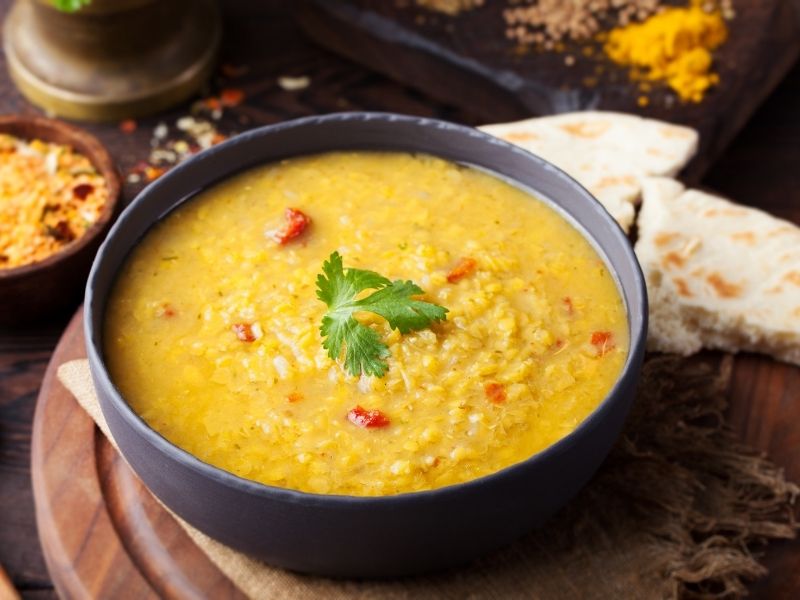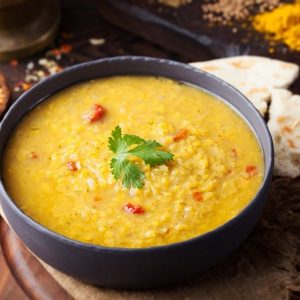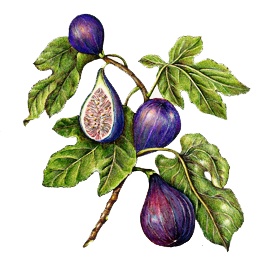Wednesday is Holi, India’s joyous festival of colors. It’s a rainbow-hued celebration of spring and the triumph of good over evil. We could do with more of that. And we could do with more dal, India’s simple but sumptuous bean stew. Like Holi, dal comes in many colors, as many colors as there are beans. For a basic, everyday dal, the bean of choice is usually lentils, which even there can be brown, green, black or red. For this moong dal recipe, I use split mung beans. They’re tiny, golden and quick-cooking, soaking up spice and offering up a velvety, spoon-hugging dal that tastes as though it’s been slow-simmering for hours.

How to Make Moong Dal
- Rinse mung beans and let drain.
- Meanwhile, heat oil in a large pot over medium-high heat. Add chopped ginger, turmeric and coriander. Stir until the ginger softens and the spices darken and turn fragrant, about 3 minutes.
- Add mung beans and water or broth.
- Stir and let mixture come to boil. Then cover and reduce heat to low for 30 minutes, until liquid is mostly absorbed and beans are tender.
- Add chopped cilantro and sea salt to taste.
Dal comes from the Sanscrit word meaning to split — split mung beans, split lentils, split peas, but many a dal is made with whole beans, too. Every one offers loads of plantbased protein, fiber and so many more of the things our bodies need, including potassium, folate and antioxidants.
Beans offer nourishment for us and for the planet. They’re low water, low carbon, high yield, so they’re super-sustainable and even improve the soil they’re grown in — how cool is that?

Every region and household in India has its own dal recipe, some (raising my hand here) have more than one. With so many beans and so many spices, dal is forgiving and versatile, inviting you to play in the kitchen:
- Use any beans you have on hand
- Change up the spices
- Dial chile heat up or down
- Vary the amount of liquid and cooking time to make your dal soupy or stewy
Dal is a cornerstone of Ayurvedic cuisine. Ayurveda, India’s ancient healing modality, separates food and states of being into three categories. There’s Sattvic — lightness and balance (spirit), Rajasic — change and energy (life), and Tamasic — heavy and dark (death). Guess which category meat falls under? The Surangama Sutra tells us that “if we eat the flesh of living creatures, we are destroying the seeds of compassion.”
A Sattvic diet relies on fresh organic fruits and vegetables, whole grains, nuts, seeds and beans. These foods energize and nourish the body without taxing it, providing the gateway to higher consciousness.
A Sattvic diet is plant-strong and subtle of spice. Strong flavors like onion, chile and garlic — three of my faves — don’t play a big role here. This dal has none of them. It’s a easily digestible deeply comforting dish you can feed to an infant of anyone off their game. But it’s far from bland. What’s amazing is the big flavor you get with just a few spices you probably have in your kitchen. Not only do they enhance this dal, they spices, they do good things for your body and spirit, too (that’s the Sattvic thing working):
- ginger with its peppery-sweet zing is also a powerful antioxidant and an age-old stomach-settler.
- turmeric adds a low, earthy note — in fact its name comes from ancient Latin, meaning merited erath. It adds even more gold to this already golden dal, is a powerful a anti-inflammatory and improves circulation
- cumin with a mildly funky flavor adds a layer of richness and complexity to dishes, while helping rid the body of toxins. For those who fear beans, cumin is a carminative. It has enzymes to aid digestion.
- coriander —coriander is the seed, cilantro is the herb. I know people who hate both, but it’s rich in vitamin C and A. I love it for its mildly lemony flavor, which adds a bright note and green finish.
You can fancy up a dal with all kinds of things — tomatoes, chilis, garlic, curry leaves, and of course, I’m always inclined to add a handful of fresh greens like spinach or chard.
May your Holi be bright with color and your dal Sattvic and spectacular.

Sattvic Moong Dal
Ingredients
- 2 cups split mung beans
- 1 tablespoon coconut oil
- 2 tablespoons fresh ginger chopped fine
- 1 teaspoon turmeric
- 1 teaspoon cumin
- 1 teaspoon coriander
- 4 cups vegetable broth or water
- 1 bunch fresh cilantro chopped
- sea salt to taste
Instructions
- Rinse mung beans and let drain.
- Meanwhile, heat oil in a large pot over medium-high heat. Add chopped ginger, turmeric and coriander. Stir until the ginger softens and the spices darken and turn fragrant, about 3 minutes.
- Add mung beans and water or broth.
- Stir and let mixture come to boil. Then cover and reduce heat to low for 30 minutes, until liquid is mostly absorbed and beans are tender.
- Add chopped cilantro and sea salt to taste.
So many dals! Here are a few riffs and a few more Indian delights:
- Chana masala, chickpea dal with bolder flavors and bigger beans
- Julie Sahni’s chana dal
- Tejal Rao’s toor dal
- Tandoori vegetables make a perfect pairing for dal. Unlike traditional recipes, mine requires no dairy and no tandoor oven.
- You probably know chai aka masala tea, a soothing, spiced tea. Sure you can get mixes, but it’s easy and rewarding to make your own. I make a damn good chai, if I say so myself.
There are many cookbooks on Indian cuisine. I’m going to offer just two:
- Just released: Raghavan Iyer’s On the Curry Trail: Chasing the Flavor that Seduced the World. For more on Raghavhan.
- The classic Climbing the Mango Trees by Madhur Jaffrey, a memoir with recipes from the actress and cookbook writer who helped introduce Indian cuisine to America.


Leave a Reply